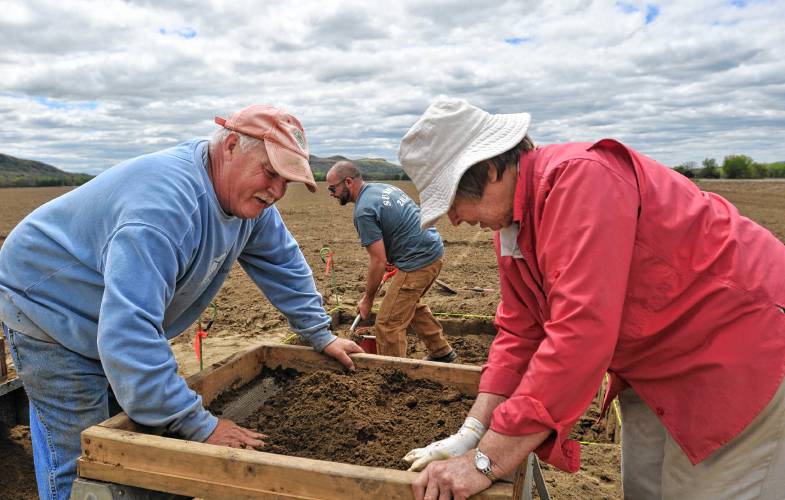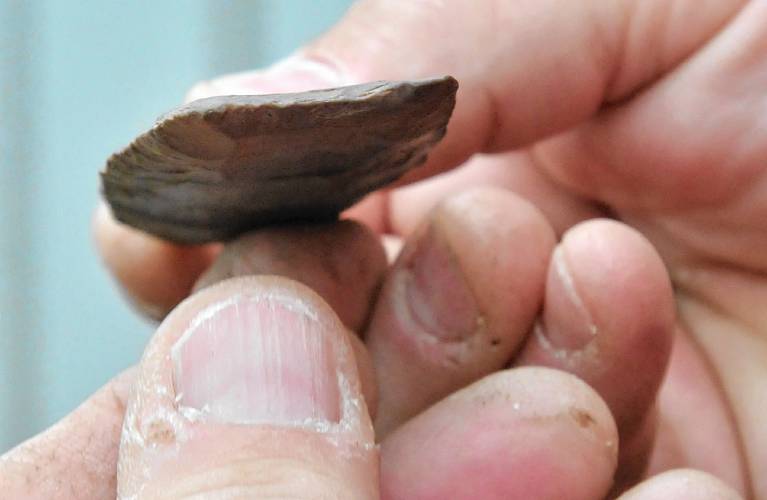“This is just the very beginning of what will probably prove to be a very important archaeological site.” – Richard Gramly, archaeologist from North Andover.

PHOTO: gazettenet.com
NORTHAMPTON, MASSACHUSETTS – an arrowhead found in a Northampton field may be the oldest artifact ever found in Massachusetts, researchers say. It’s a find from a larger dig in a meadow just outside of downtown Northampton.
Archaeologists began research on the area when they first discovered the arrowhead. They believe it to belong to the Clovis culture: a paleo-Indian culture that roamed the early Americas around 13,000 years ago. They’re considered to be the ancestors of most of the indigenous cultures of Americas, and are famous for their “Clovis points”, or a specific technique for forming stone tools and weapons.
The arrowhead is almost 13,000-years-old, and is worth nearly $15,000. It was first discovered by Jason Lovett, a special educator and amateur archaeologist from Vermont who found it with his metal detector in a field. He said he “immediately knew what [he’d] found”.
Thankfully, he’d already met Gramly previously at a meeting for the American Association of Amateur Archaeologists. The two managed to contact a historical commissioner named Bud Driver. Driver arranged for the return of the arrowhead to the field’s owner, Wayne Goulet. Goulet then allowed Gramly and his team to excavate his field in search of more artifacts.
They’ve been working on the field for a few years, now, using a complex and painstaking process that involves putting excavated dirt through a mesh screen in hopes of catching small artifacts. No more arrowheads have been found, but they’ve found lots of other artifacts indicating that the Clovis used this area often to hunt.
They’ve found flakes of quartz and flint, materials used by the Clovis to create their weapons and tools. This makes the discovery of the arrowhead even more important. Before, experts could argue that the site itself wasn’t in use. Perhaps native peoples simply dropped the arrowhead there on their way to somewhere else. However, the discovery of the flakes indicates that the Clovis used this site to create tools. The archaeologists now believe that the Clovis used this area as a springtime hunting ground

PHOTO: gazettenet.com
“Protection [of this land] is the number one priority,” Eric Johnson, head of the Archaeological Services office at the University of Massachusetts in Amherst said. He’s pointed out that the area is one of the most popular dig sites in New England because artifacts lie close to the surface and the fields are tilled yearly by farmers. It’s an ideal spot for archaeologists to find new artifacts.
Historical commissioner Bud Driver wants to keep this land in the possession of local people. He believes it’s important that local citizens play a role in deciding the value and determining the meaning of artifacts and fossils. It keeps the history where it belongs: with the people that live there.
“We want public involvement,” Driver said, “they’re starving for information.”
Currently, the arrowhead and other artifacts found at the Northampton field are in government custody. They’re available for public study. Scholars can examine the items, share their papers and findings, and the information can then be given back to the public. Driver hopes to make the community as aware of this find as he can. It’s important that we all are a part of discovering our own history.

